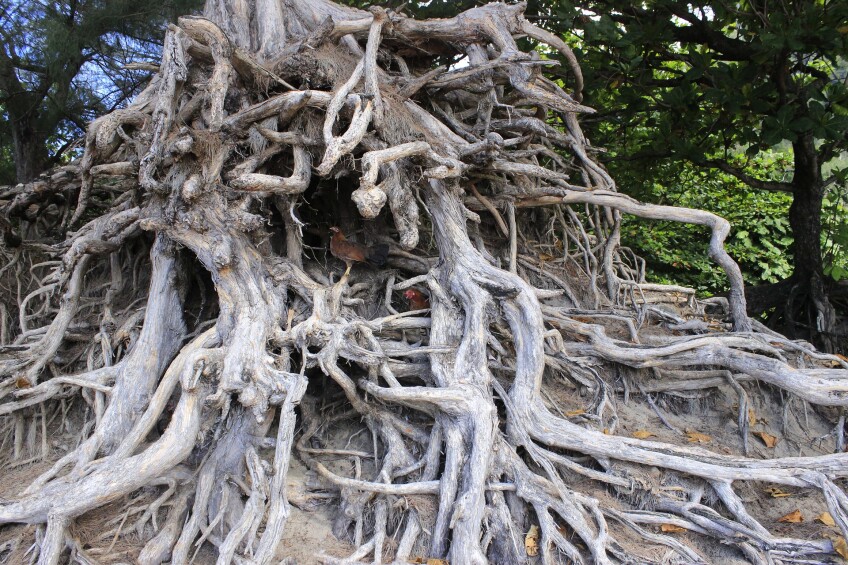How We Talk (And Write) About Trees Is a Reflection of Ourselves

This article is part of a series, in collaboration with the Civic Paths working group at the University of Southern California.
In the 2009 film "Avatar," and the recently released "Avatar: The Way of Water," the prominent figures in both narratives are trees. Beyond simply that the landscape is covered in trees, the Tree of Souls and the Tree of Voices are spiritual sites that seem to be the origin of the planet's entire living ecosystem.
The image of a tree of life is admittedly not new. Beyond its omnipresence in popular fiction, the tree of life also appears in religious and spiritual narratives globally, from Ancient Mesopotamia to Chinese mythology, Norse mythology, Islam, Christianity and more. Though it serves, of course, different functions in these narratives, in general, the tree of life serves as an archive that structures all life. The tree of life is also a tree of knowledge and of morality.

Through the language around our imaginations of trees, we express ideas about how to order the world. Think, for example, of roots. Think of the ways in which roots are discussed, the ways in which roots become metaphors for interpersonal connection and for a connection with an idea of our "origin," whether that word refers to an individual home, a culture, or the Earth. The way we talk about tree roots reveal what it means to us to be connected.
In "Shelter: A Love Letter to Trees," the poet Ada Limon writes, "To talk about trees then is also to talk about each other, the ways we are attached to what is living and how we want it to go on doing just that for as long as possible. It is never only trees, but what binds us together, the trees, the roots, the eternal part of us that is both the seed and the tree."
To talk about trees then is also to talk about each other.Ada Limon, from "Shelter: A Love Letter to Trees"
Placing an emphasis on the importance of roots, here, is a way to emphasize connections not just between trees or just between humans, but between the trees and the humans. Roots become a metaphor for interspecies connection, and this language of roots and rootedness transforms these vegetal entities into appendages of human connectedness.
While the image of roots as networks that connect us to other people, to our own selves, and to the Earth itself is popular, this way of structuring our connections depends on a hierarchization of life. Language is not neutral; it represents and reinforces our own biases. In noting these metaphors of trees, my aim here is to demonstrate how this language around trees reveals and reproduces hierarchies of feeling, intelligence and politics. Language specifically of the roots of trees, though, offers a different way to structure feeling, intelligence and politics.

In response to an arborescent structuring of power and knowledge production, Gilles Deleuze and Felix Guattari proposed a rhizomatic structure. The tree-like model is hierarchy-based and denotes linearity (think: genealogical tree). It suggests that knowledge has one single origin point (the seed) which produces predetermined results (the branches or fruits). In contrast, the rhizome is non-linear and non-hierarchical. This dismantles origin stories of knowledge production. They would suggest, then, leaving behind the "tree" of life for the roots of life, plural and ex-nihilo. If, as writers like Alexis Pauline Gumbs have argued, "freedom requires a species-level betrayal of our founding mythologies," then cultivating a rhizomatic imagination may be a path to freeing our knowledge from the hierarchies that we produce and that produce us.
Sources
Cameron, J. (Director). (2009). Avatar [Film]. 20th Century Fox.
Cameron, J. (Director). (2023). Avatar: The Way of Water [Film]. 20th Century Studios.
Deleuze, G., & Guattari, F. (1987). A thousand plateaus — capitalism and schizophrenia.
University of Minnesota Press.
Gumbs, A. P. (2020). Dub: Finding ceremony. Duke University Press.
Limon, A. (2022). Shelter: A love letter to trees. Scribd.



